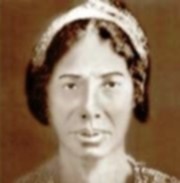
d: 1921
Raya Ali Hammam
Summary
Name:
Years Active:
1919 - 1920Status:
ExecutedClass:
Serial KillerVictims:
17Method:
SuffocationDeath:
December 21, 1921Nationality:
Egypt
d: 1921
Raya Ali Hammam
Summary: Serial Killer
Name:
Raya Ali HammamStatus:
ExecutedVictims:
17Method:
SuffocationNationality:
EgyptDeath:
December 21, 1921Years Active:
1919 - 1920Date Convicted:
May 16, 1921bio
Raya Ali Hammam was born around 1875 in Egypt during a period of significant political, economic, and social change in the country. Little is known about her early childhood, but she grew up in a lower-class household and experienced the harsh realities of poverty from a young age. Like many women of her social class in late 19th- and early 20th-century Egypt, Raya faced limited opportunities for education or employment. She eventually married a man named Hasb‑Allah, and together they struggled to make ends meet amid a declining Egyptian economy, further worsened by the impacts of World War I.
By the early 1910s, Raya and her younger sister Sakina relocated to Alexandria in search of a better life. They initially became involved in managing brothels and facilitating prostitution. The city’s coastal location and its growing reputation as a cosmopolitan hub meant that prostitution, gambling, and other illicit activities flourished in its urban underbelly. Raya’s household income depended heavily on this work.
Faced with mounting financial pressures, Raya and Sakina began hiring impoverished teenage girls as workers. However, the local sex trade became increasingly competitive, and other women who operated independently were seen as threats to their livelihood.
murder story
Raya’s transition from brothel operator to serial killer unfolded between 20 December 1919 and 12 November 1920, during one of the most notorious killing sprees in Egypt’s modern history. Alongside her sister Sakina, their husbands — Hasb-Allah and Mohamed Abd El-‘Al, and two male accomplices, Raya was involved in the calculated murder of 17 women in the Labban neighborhood of Alexandria.
The group’s motive was driven by a mix of financial desperation and ruthless competition. After World War I, the Egyptian economy was in decline, and sex work, which had sustained the sisters for years, was no longer as profitable. Independent sex workers were increasingly seen not only as business rivals but as easy targets for theft and murder. Raya and her co-conspirators developed a systematic method to eliminate them and profit from their deaths.
Raya and Sakina would lure a selected victim into one of several rented homes, often under the pretext of drinking, socializing, or offering work. Once inside, the women were encouraged to drink alcohol until they became disoriented or intoxicated.
While the victim was restrained, the group suffocated her using a wet cloth pressed tightly over her nose and mouth. After ensuring the victim was dead, they stripped her of her jewelry, money, and clothing. The stolen valuables were later sold to a local jeweler named Ali Hasan, with the proceeds divided among the six members of the group.
To dispose of the bodies, the gang removed floor tiles from their homes, dug shallow graves beneath them, buried the victims, and then replaced the tiles to conceal the burials. This gruesome method allowed them to continue operating their criminal enterprise for nearly a year without arousing suspicion. In total, they buried victims across four separate properties in Alexandria, including one located disturbingly close to the local police station.
The turning point came in November 1920, when city workers laying water pipes under one of the rented homes discovered human remains. The property had previously been leased by Sakina, which triggered a full investigation.
Police searched all residences linked to the sisters and were horrified to uncover 17 bodies, all female, hidden beneath the floor tiles. The investigation tied the murders directly to Raya and her co-defendants.
Following their arrest in late 1920, Raya, Sakina, and their accomplices were charged with multiple counts of premeditated murder. Their trial commenced in early 1921 and drew massive public and media attention. On 16 May 1921, Raya and the others were convicted and sentenced to death. She was executed by hanging on December 21 ,1921,